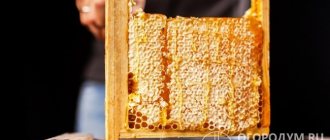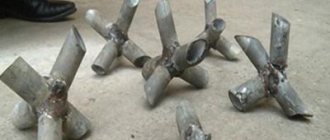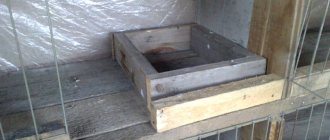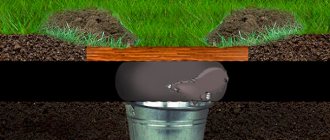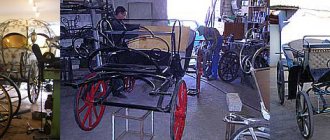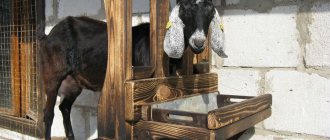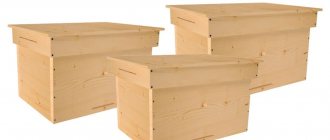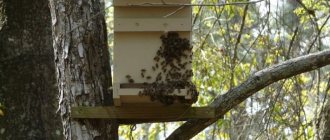Review author: Terrari School of Design
How wonderful it is to have your own home, where you can enjoy the surrounding nature, spend weekends with your family, and relax.
Some people cannot imagine life in the private sector without animals, especially rabbits. These cute pets will not only delight all family members, especially younger ones, with their appearance, but will also bring great benefits.
In order for them to live comfortably and bring offspring, it is necessary to equip their home - a rabbitry. What it should be like, how to make a rabbitry with your own hands - let's look at it in more detail.
Ideal place for a rabbitry
Where a convenient rabbitry for the garden will be located is of great importance, so you should think about this in advance. During the day, when the sun is shining brightly, its rays should not directly hit the building area. Therefore, a place in the shade is ideal. In addition, it is very good if the structure is located on a small hill.
Any cool winds should under no circumstances appear near the rabbitry. The same goes for damp or stale air. You must also remember that there should not be a compost pit nearby. Such a neighborhood threatens the extinction of some or absolutely all animals.
It is also recommended to install this building away from various sources of noise, such as an enclosure with dogs and the like.
Mikhailov's mini-farm
The building for breeding rabbits by Academician Mikhailov deserves special attention.
Scheme of a rabbitry using the Mikhailov method
A mini-farm created using this method involves rare human participation in caring for animals. In such cages, all conditions are created for the harmonious existence of animals using lighting, self-feeders, the required temperature is maintained in winter, and exhaust hoods and ventilation are provided.
Specifics of the mini-farm device
Mikhailov's mini-farm allows you to comfortably place a fairly large number of animals in a small area. Up to 25 individuals live in one cage. The following features contribute to this:
- Automated feeding mode (self-feeders). Animals receive an unlimited amount of food and drink. In winter the water is heated. Food and water are added once a week.
- Automatic room cleaning. Excrement and waste are placed in a specially designated area.
- The design of the feeders does not allow them to become dirty, and the food always remains clean.
- Ventilation removes gases outside through a pipe.
- In winter, the rabbitry and queen cell are heated, which promotes regular birthing and the development of healthy and strong offspring.
- The mini-farm is maximally adapted to the instincts of animals, bringing conditions closer to natural ones.
- In winter, the northern part of the cells is insulated, and in the summer, ventilation is provided in the southern part.
Ready-made rabbitry using the Mikhailov method
Mikhailov’s design is very effective and is used both on private farms and on an industrial scale.
Materials suitable for construction
To make a simple rabbitry with your own hands, you will need to purchase budget, but high-quality material - it is very important that it is durable. This is all due to the fact that the future residents of this building, despite their cute appearance, are still rodents. Therefore, they will probably want to chew on their home.
For construction you will need:
- wood;
- galvanized metal sheet or slate;
- Rabitz;
- galvanized mesh;
- OSB board;
- plywood.
Let’s not forget about the necessary tool that will be used to assemble the future house for furry pets.
Types of designs
On the Internet you can find a lot of information, as well as photos of ready-made rabbit hutches, after studying which you can choose exactly what suits your taste and budget allows.
They are:
- Open. It is more popular due to the fact that its size can vary and will allow up to one hundred individuals of this species to live in it, and is easy to use.
- Closed. Due to the fact that this type of structure is placed in a finished building, such as a barn, the number of pets will be limited due to the minimum housing space.
If you are building a new rabbitry, you can consider the following options: single or multi-section structures.
Planning the future livestock
How to build a good rabbitry without knowing how many rabbits will live in it? If you just want to have animals “for testing”, one rabbit with offspring is enough. They can easily get by with 1-3 cells on the site. In order for the supply of meat to be regular and uninterrupted, 20-30 individuals of different ages of different categories are needed.
To begin with, you can get a few rabbits and care for them throughout the warm season to determine how well this activity fits your plans
Dimensions and drawings
Before you begin installing the structure, you need to draw a plan for the future building yourself or study ready-made drawings of rabbit hutches on the Internet and make all the necessary calculations.
During which the following points should be taken into account:
- the length of the cage should be comfortable for both males and nursing rabbits;
- large individuals require more spacious housing than other individuals;
- young animals and adults must live separately.
After all conditions have been taken into account, options have been considered and drawings have been made, construction can begin.
Construction stages
First you need to decide what the building will be like. The easiest way is to look at rabbitry ideas on the Internet and take drawings from there. However, if you wish, you can come up with your own unique sketch.
The advantage of the second is that it becomes possible to build your own individual structure, based on size, quantity of materials and capabilities. After everything is prepared, you can begin work.
If the frame is wooden, then the slats are cut to the required dimensions and then fastened with self-tapping screws. The absence of any distortions is very important. To check whether they are present, a level (for checking horizontal surfaces) and a square (for vertical ones) are used.
Afterwards the front and rear frames are assembled. Well, then, all that remains is to assemble them into one whole frame, connecting the frames with short jumpers, which are the ceiling and the floor.
The next stage is laying the roof. It is best to use OSB sheet to build the first tier. This material is moisture resistant, so it's perfect.
The sheet must be cut so that 10 to 15 cm of the edge extends beyond the edges of the cage. The roof of the second level should be constructed of corrugated slate, attached to the sloping frame bars.
The only thing that remains is the installation of the door, drinkers and feeders. This completes the construction of the rabbitry.
Insulation of the room
If necessary, enclosed spaces are additionally insulated during cold weather by installing space heating. This approach to business makes it possible to obtain young animals all year round.
When kept outdoors, the floors are insulated, boards are laid on them, and a thick layer of hay is placed on top. Plywood is used to cover the mesh walls, only here you need to take into account the presence of small holes to ensure ventilation. The top of the cage, side walls and back are additionally insulated. If possible, the cages should be moved to other buildings so that the wind does not harm the animals.
If, according to forecasts, a prolonged drop in temperature is planned, then the rabbits must be transferred to a warm room. With the onset of cold weather, the diet is reviewed so that animals receive adequate nutrition with a sufficient amount of vitamins and mineral components.
Source
Useful tips
Pros are always ready to share their observations and advice with novice summer residents, which will not only facilitate installation, but also help make the structure durable.
Here are some of them:
- If you want to extend the life of the structure, you can upholster the wooden parts of the frame with metal. It is not necessary to purchase it separately; tin cans or galvanized steel will be sufficient for roofing work. Upholstery will not take much time, and the product will last many years longer.
- Depending on the size of the rabbitry, a different amount of wood will be required. For example, ordinary pieces of wood with a cross-section of 5x5 cm would be an excellent material for making a frame. They are inexpensive and very easy to use.
- Under no circumstances should you use an antiseptic for impregnation. This product is quite toxic and can be fatal to rabbits. Instead, it is helpful to let the frame dry thoroughly. This will also extend its service life.
- To cover the tiers, use a material that will not conduct moisture, such as slate. If the rabbitry is placed outside, there is no need to make a metal roof. It gets very hot in the sun, which can cause discomfort or even kill residents.
- The sheathing of the frame can be made using a chain-link mesh with 2x2 cm cells. And the sides, doors and facade can be made of steel mesh. To make it easier for the animals to get to the food, the feeders into which the grain will be poured should be made of a mesh with 5x5 cm cells. It will be very convenient if they are of a rotating design. This will greatly simplify both filling and cleaning.
- Solid flooring is not recommended, as this threatens to worsen the microclimate in the rabbitry and cause rapid rotting of the wood. So it is best to make the bottom lattice. The material can be planed floor blocks, the gap between which should not be more than 1 cm.
- Drafts are very dangerous for rabbits; these animals easily get sick. To prevent this from happening, the back wall (using polycarbonate, boards, plywood or OSB) is made blank.
- If the building is located outside, then the supporting frame must be metal. You just need to weld such a structure from a 4.5x4.5 cm corner. Next, you should insert the made mesh sections into it. The mesh is fixed to the frames, which are obtained by welding a steel rod. In addition, you can make the frame wooden.
- To prevent the rabbits from developing corns on their paws, which cause severe discomfort, it is worth placing a sheet of plywood on the floor that will protect the animals’ paws. But at the same time, you need to remember that such plywood should be cleaned and dried regularly.
- The net will not be able to protect you from rain or snow; the animals will not be completely protected. So it would be more correct to install the cage under some kind of canopy, or even better, in a barn.
A neat, high-quality and, most importantly, do-it-yourself rabbitry will not only please your furry pets, but will also look great in the photo. And proper care, feeding and maintenance will soon delight you with new healthy offspring.
What should a barn be like for keeping rabbits?
Before construction begins, the premises for the animals are determined with its location. The north side, under the canopy of large trees, is considered favorable for breeding. The distance from housing and other outbuildings is 10-15 meters.
Materials for construction:
- board;
- logs;
- brick.
See also
TOP 10 best rabbit breeds for breeding for meat at homeRead
The choice depends on the capabilities and desires of the rabbit breeder. A cold shed is built from boards, and a warm one from bricks and logs. The area of the room depends on the method of keeping: with free range, 1 square meter is enough for 1 rabbit; with a cell – no less than 1.5 square meters (1.5 meters long, 1 meter wide).
The roof of the rabbitry is made pitched to be used for drying hay. A hay storage facility (attic or deck) is installed between the roof and the room. When calculating the area, queen cells are taken into account: cages for rabbits for littering. When keeping rabbits in cages, an enclosure under a canopy for walking is attached to the back wall of the barn.
The barn is built without a foundation. There should be no gaps in the walls. This will protect the room from drafts, mice, ferrets and weasels. The rabbitry should have 2 doors: a mesh door and a solid door that closes tightly.
